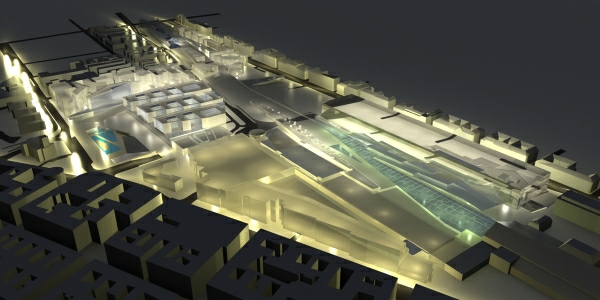Museum District
Thoughts on the Cultural Strategy of Budapest
Text and plans: József Finta Ph.D
I obsessedly believe that a meaningful and safe future for Budapest is only guaranteed if it can evolve into the cultural (and as a result actually a touristic) centre of Central Europe. Its position is excellent for this perspective, being the meeting point of northern-southern, eastern-western corridors of traffic and transport, which is topped by the unique natural-environmental faculties of the Danube and so far unexploited potentials for communication, the unique beauty of the urban landscape (at least from a bird’s eye-view), its already existing and operating cultural institutions (museums, theatres, music halls) predestined it for this key role (much more than Vienna and far more than Prague, Warsaw, Bratislava or Bucharest).
In line with the designs of the Administrative District there is now a vacant lot offering the chance to have a Museum District built here to span the Boulevard and the new „Ferdinánd” communication tunnel as an integral part of the green zone (promenade) above the rails, and to embrace some 5-6 buildings housing museums. Such a new development to be located here could be the Ethnographical Museum, the Museum of Modern Hungarian Art, the badly needed Architectural Museum, maybe a joint international centre for the universities of art for exhibitions and in-service trainings, a Technological History Museum, An Art Centre for Children and the Youth and a so-called Europe House. Moving the National Gallery also here might be an idea worth considering. Many people might say and actually they do say that the country impoverished and much indebted has more serious problems to solve and it should not undertake now a project of this scale. However, I myself do believe in the long-term spiritual-intellectual impact of this conception, in its gesture of increasing values and economic benefit for the tourist industry but first of all in its capacity of integrating this part of the capital.





